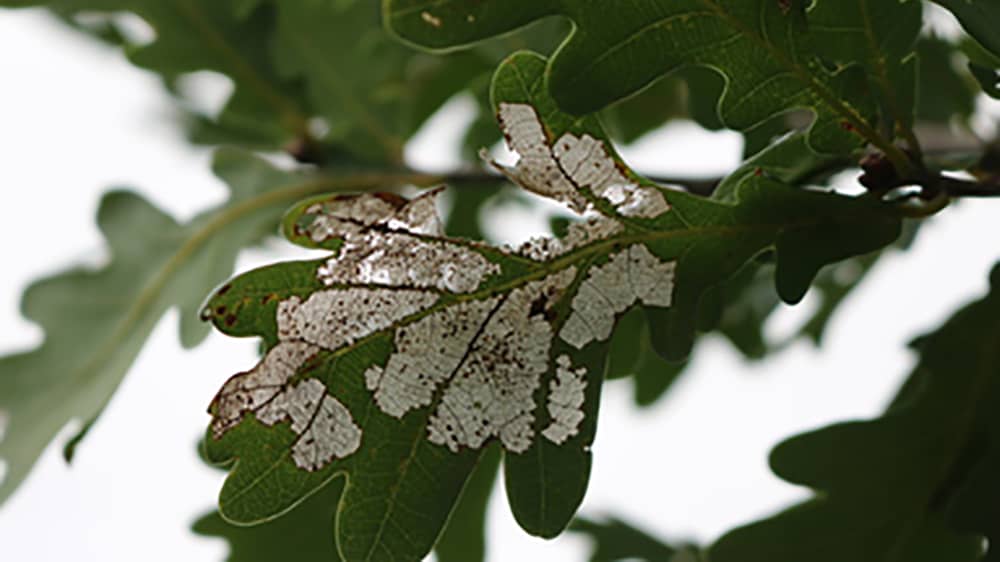
KJFM NEWS — Garden Talk is produced monthly at the Adair County University of Missouri Extension Center in Kirksville, Mo.
The oak skeletonizer, Bucculatrix ainsliella, is a native insect that occurs throughout the Great Lakes region, Midwest and southern states. The larval stages feed on the leaves of several species of oak, skeletonizing the leaves and causing concern for homeowners.
Adults emerge from the overwintering cocoons in late April and May, and deposit eggs on the undersides of newly expanded oak leaves, near the mid-vein. The term “skeletonizer” refers to the manner in which the larvae feed on the leaves. They first feed by tunneling within the leaves, causing blotch or serpentine mines. From the third instar on, they feed externally on the lower leaf surface. As a result of this later feeding, leaves appear skeletonized, often become almost translucent and eventually dry out.
Rarely is the feeding injury cause for alarm. As the larvae grow and molt, they spin silken pads on the undersides of the leaves under which molting occurs. After several molts, the larva spins a characteristic white, ribbed cocoon on leaves, branches, twigs, or nearby objects. There are two typically two generations of this insect per year.
The second generation adults fly in late July and August, with larvae usually reaching maturity by late October. Leaf skeletonizer insects do not bite people or pets. They do not attack or become established in dwellings.
Unfortunately, little can be done. Spraying trees with an insecticide to control the caterpillars may help, but this can be very expensive when large trees are involved. Populations of the oak skeletonizer vary greatly from year to year, indicating that natural factors such as predators, parasites, or weather may influence them. Depending on population numbers, damage may be slight or even go unnoticed, except in outbreak years.
Over the years, gardeners have learned that native insects feeding on trees are not necessarily a bad thing. Insects are a food source for birds. We have learned to tolerate insect feeding damage on trees, particularly native trees like oaks and hickories. So, if you see oak skeletonizer damage on your oak tree leaves this summer or fall, do not worry. It won’t kill your trees.